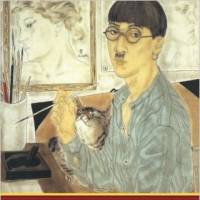Arguably Phyllis Birnbaum's best biography to date, "Glory in a Line" examines the life of Japanese painter Tsuguharu "Leonard" Foujita.
Glory In A Line, by Phyllis Birnbaum
352 pages
Faber & Faber, Nonfiction.
Although he supported Japan's military cause in World War II, we shouldn't condemn Foujita's best work for a lapse, however serious, in judgment. The work must stand alone. And in Foujita's case it was a very fine output, one that included sinuous female nudes, drawings of cats and portraits completed on journeys to then-remote areas of Latin America and Okinawa. Even his depictions of heroic last stands in desperate battles of the Pacific, such as on Saipan and the Aleutians, transcend propaganda, showing us vainglorious, Goya-like slaughters.
Foujita was the only Japanese inducted into the prestigious "School of Paris," alongside artists such as Amedeo Modigliani and Picasso.He was a well-known character on the streets of the City of Light, and his bowl-cut hairstyle, Harold Lloyd glasses, earrings and flamboyant clothing were so distinctive that one Paris shop displayed a mannequin in his likeness.
One wonders if the book's subtitle, "The Artist Caught Between East & West," was inserted at the insistence of the publisher. Foujita, after all, was an artist eminently at home in both Occidental and Oriental milieus.
Read archived reviews of Japanese classics at jtimes.jp/essential.


















With your current subscription plan you can comment on stories. However, before writing your first comment, please create a display name in the Profile section of your subscriber account page.